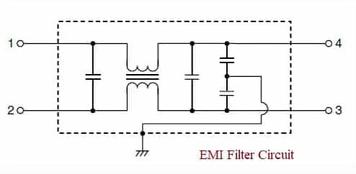Understanding Clamp Meters: Principles, Uses, and Applications
Advertisement
A clamp meter is a handheld electronic device used to measure electrical currents without physically disconnecting the conductor. It features a hinged clamp that opens and closes around a conductor (like a wire) to measure the current flowing through it.
There are two main types of clamp meters:
- AC Clamp Meter: Measures alternating current (AC) in electrical systems.
- AC/DC Clamp Meter: Measures both alternating current (AC) and direct current (DC).
Electricians and technicians use clamp meters to troubleshoot electrical circuits, identify faults, and measure current in devices like transformers, motors, and power lines. Modern clamp meters often have digital displays showing current values in numbers. More advanced models might also measure voltage, frequency, resistance, temperature, and more.
How a Clamp Meter Works
Clamp meters operate based on electromagnetic (EM) induction. When current flows through a conductor, it creates a magnetic field (“H”) around it. The clamp meter detects this magnetic field, allowing it to measure the current without direct contact.

Image courtesy: Clamp meter from Fluke Corporation
The clamp meter measures large AC currents using transformer action. When the clamp’s jaws are placed around a conductor carrying AC current, the current is coupled into the device, similar to the iron core of a power transformer. Only a tiny amount of current is taken inside due to the turns ratio between the primary and secondary windings.
For example, if the turns ratio is 1/1000, and 1 amp of current is flowing through the conductor, the clamp meter input would see 0.001 amps (1 mA).
Clamp meters can measure combinations of alternating and direct current, including static DC, charging DC, and regular AC. Usually, they use Hall effect sensors to measure DC current.
Uses of a Clamp Meter
Here are some common applications for clamp meters:
- Current Measurement: The main use is measuring electric current flowing through a conductor without physical contact.
- Electrical Troubleshooting: Essential for diagnosing problems in electrical systems, like overloads, short circuits (SCs), and imbalances.
- Load Monitoring: Helps monitor the load on circuits to ensure they operate within safe limits and prevent overloads.
- Motor Testing: Crucial for testing and maintaining electric motors, measuring current draw, and ensuring proper function.
- Other Applications: Also used in energy audits, circuit verification, safety checks, process control, power quality analysis, HVAC systems, residential wiring, and more.
Clamp Meter Application Note
FLIR Systems’ clamp meter (Model No: EX840 CAT IV) has these features:
- Built-in non-contact Infrared thermometer with laser pointer.
- Measurement of RMS voltage and RMS current.
- Peak hold feature to capture current inflows & transients.
- Multimeter functionality: measures AC/DC voltage, capacitance, resistance, frequency, diode, and continuity.
- 4000 count backlit display.
- 1.7-inch jaw opening for conductors up to 750 MCM / 500 MCM (2 Nos.).
Clamp Meter Manufacturers/Vendors
Here are some popular clamp meter manufacturers and vendors:
- Fluke India
- Extech Instruments
- Amprobe
- Kyoritsu (https://www.kew-ltd.co.jp/)
- Farnell
- AEMC Instruments
- AideTek (https://www.aidetek.com/)
Clamp meters are valuable for electrical professionals because they allow non-invasive current measurements, reducing the need to interrupt circuits or dismantle wiring during testing.
Important: Always use clamp meters correctly and follow the safety guidelines in the user manual to avoid potential hazards or inaccurate readings.
Advertisement
 RF
RF

